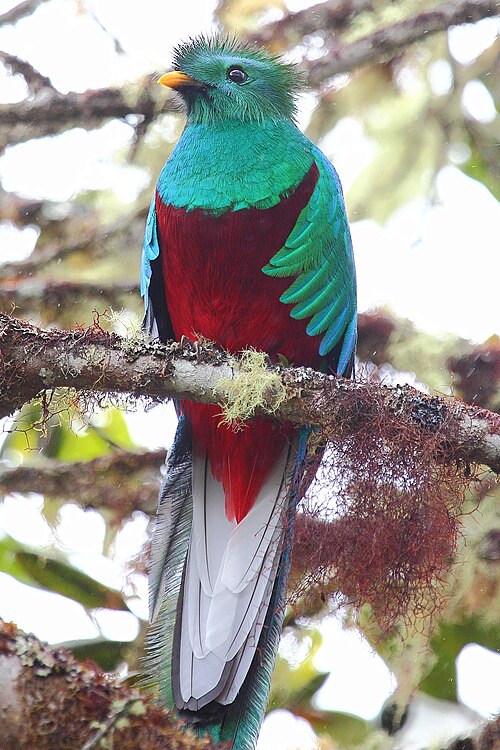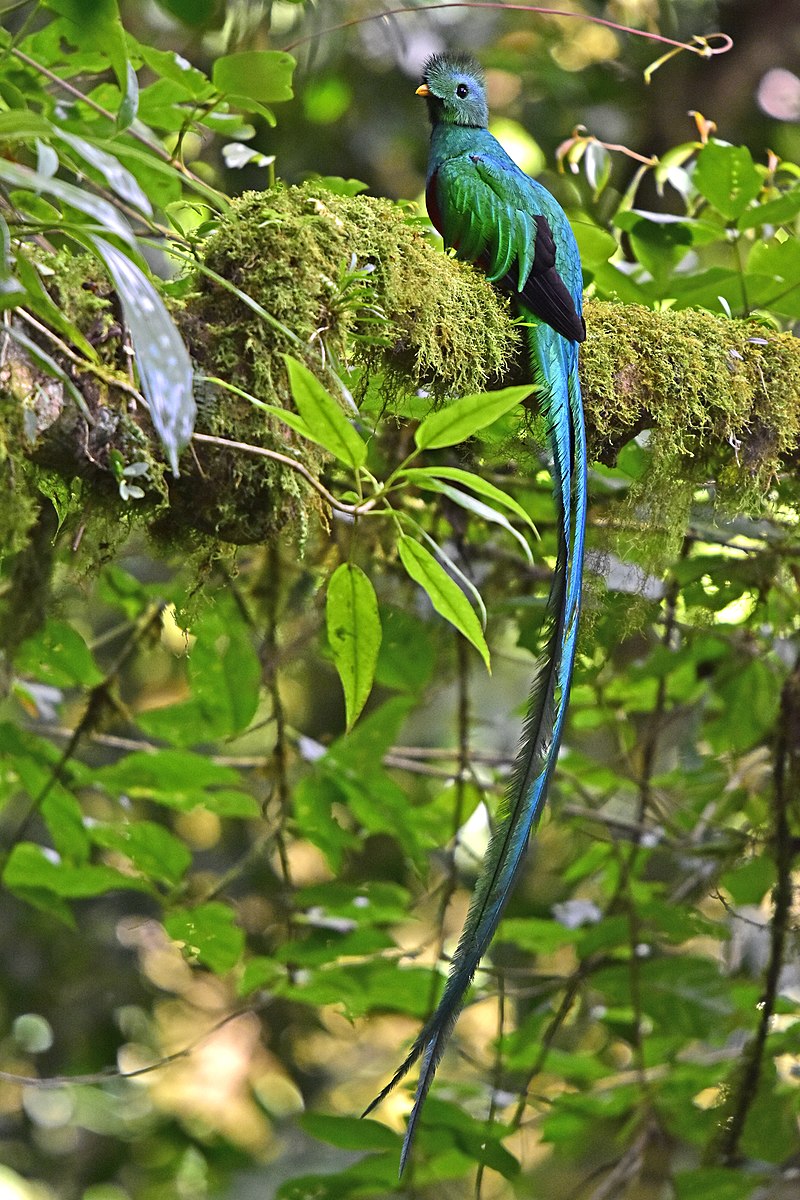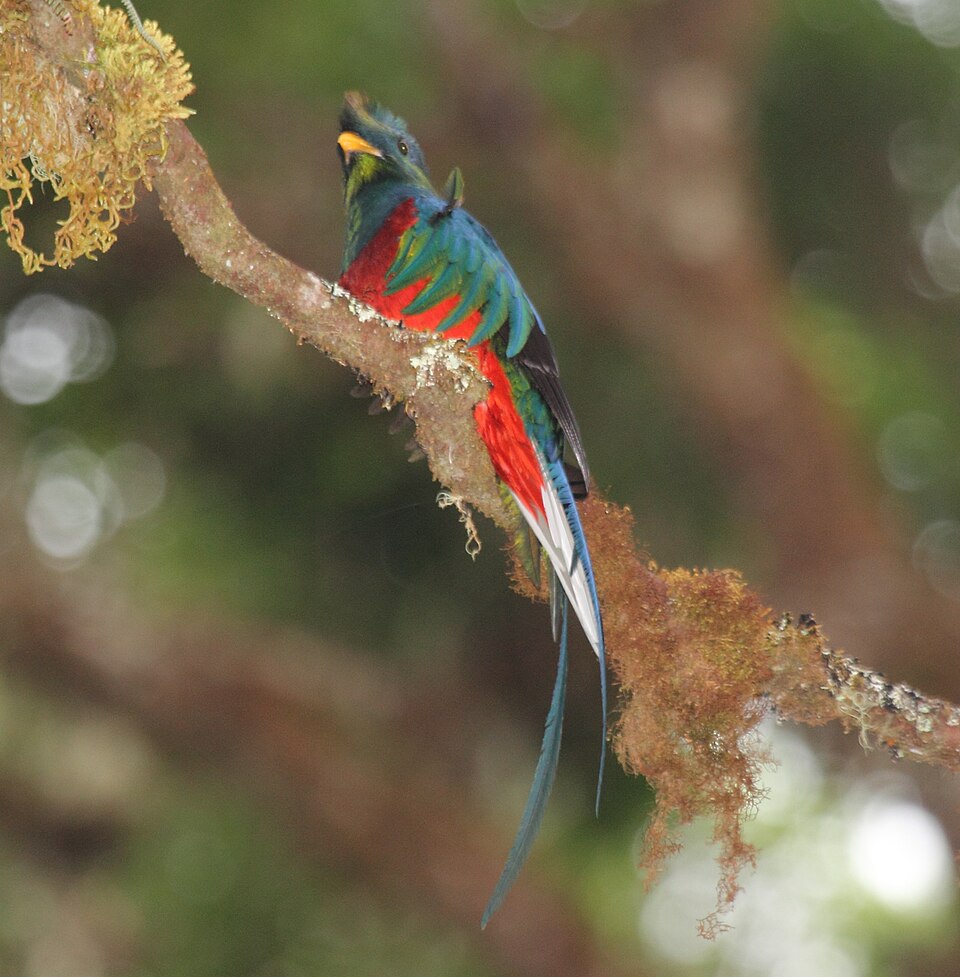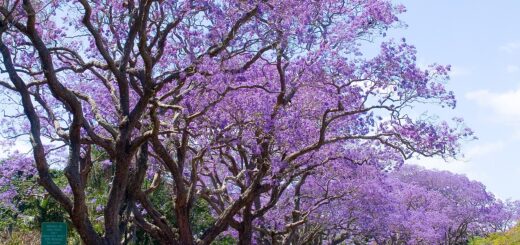The Resplendent Quetzal – A Jewel of the Cloud Forests

The Resplendent Quetzal (Pharomachrus mocinno) is often regarded as one of the most beautiful and majestic birds in the world. With its vibrant plumage and striking appearance, this bird has captured the imaginations of people for centuries. Native to the cloud forests of Central America, the Quetzal is not just an icon of natural beauty but also a symbol of freedom and mythological significance. In this blog, we’ll dive into what makes the Resplendent Quetzal so unique, its ecological role, and its status as a cultural treasure.
A Living Rainbow: The Quetzal’s Appearance
The Resplendent Quetzal is a spectacle to behold. The adult male, in particular, is a living work of art. With iridescent green and turquoise feathers, it boasts a long, flowing tail that can be up to three feet in length—often longer than the bird itself! The bird’s chest is a vibrant crimson, which contrasts beautifully with its metallic green plumage. The Quetzal’s striking colors and unique tail feathers make it one of the most visually stunning birds in the world.
Females, while less flamboyant than males, are still quite striking with their green feathers and shorter tails. These differences are part of the bird’s natural sexual dimorphism, where the males exhibit more dramatic colors and features to attract mates.
Habitat: Central America and Southern Mexico
The Quetzal’s home lies in the misty, cool cloud forests of Central America. These forests, found in countries such as Guatemala, Costa Rica, and parts of Mexico, are high-altitude ecosystems that provide the perfect environment for the Quetzal. The dense foliage and constant mist offer the Quetzal both protection and a diverse diet, which consists mainly of fruits, insects, and small vertebrates like frogs. One of its favorite foods is the wild avocado, which is critical to its diet and reproductive cycle.
However, the Quetzal’s preference for these cloud forests also makes it vulnerable to habitat loss. Deforestation and climate change pose significant threats to the bird’s survival, as they alter the delicate ecosystems in which the Quetzal thrives.

Male Resplendent Quetzal displaying his long tail. © Creative Commons | Author: Sidney Bragg
The Symbolism and Cultural Importance
The Resplendent Quetzal holds deep cultural significance in the region. In ancient Mesoamerica, the bird was revered by both the Maya and Aztec civilizations. The feathers of the Quetzal were so highly prized that they were used in royal clothing, headdresses, and ceremonial regalia. To the Maya, the Quetzal was a symbol of the “God of the Wind” and was believed to embody freedom. The Quetzal’s brilliant plumage was thought to be a gift from the gods, representing beauty, purity, and the connection between the earthly and divine realms.
Today, the Quetzal continues to hold national significance in Guatemala, where it is the country’s national bird and appears on the flag and coat of arms. It is also a symbol of independence, with many interpreting the bird’s elusive nature as a representation of the desire for freedom and the struggle against oppression.
Quetzals in the Modern World: Conservation Challenges
As beautiful as the Resplendent Quetzal is, it faces significant conservation challenges. The species is classified as “Near Threatened” by the International Union for Conservation of Nature (IUCN), with its population declining due to habitat destruction and illegal trapping. Despite the bird’s remote habitats, deforestation for agricultural expansion, logging, and urbanization have encroached on the Quetzal’s cloud forest home.
Conservation efforts are underway to protect these habitats and ensure the survival of the species. Many organizations are focused on preserving the cloud forests, creating protected areas, and promoting sustainable practices that will benefit both local communities and the wildlife that depend on these forests. For example, ecotourism has been encouraged in areas where Quetzals are present, offering a sustainable alternative to destructive logging and promoting awareness of the bird’s importance.
The Quetzal’s Role in Ecosystems
Beyond its striking appearance and cultural importance, the Quetzal plays a vital role in its ecosystem. As a fruit-eating bird, it helps with seed dispersal, promoting the regeneration of the forest. The Quetzal’s feeding habits contribute to the health of the cloud forests, ensuring the diversity and resilience of plant life. In turn, these forests provide habitat for countless other species, maintaining the intricate web of life that defines the ecosystem.
Facts about Resplendent Quetzal
The word “quetzal” came from Nahuatl (Aztec), where ‘quetzalli’ meant “tall upstanding plume” and then “quetzal tail feather”; from that Nahuatl ‘quetzaltotōtl’ means “quetzal-feather bird” and thus “quetzal”.
– The skin of the quetzal is very thin and easily torn, so it has evolved thick plumage to protect its skin.
– Though quetzal plumages appear green, they are actually brown due to the melanin pigment. This is the same pigment that causes tanning in humans.
– Like other members of the trogon family, the quetzal has large eyes that adapt easily to the dim light of its forest home.
– When the quetzal is in the nest incubating eggs its long tail-covert feathers fold forwards over the back and out of the hole, where they often look like a bunch of fern growing out of the hole.
– During the incubation period, when a parent approaches the nest hole, they land and rotate their head side to side before entering; this process is known as “bowing in” and ends when the chicks hatch.
– The bird is of great relevance to Guatemalan culture, being a character in the widely popular legend of the local hero Tecún Umán, a prince and warrior of the Quiché (K’iche’) Maya and the quetzal was his nahual (spirit guide).
– The quetzal iridescent green tail feathers, symbols for spring plant growth, were venerated by the ancient Aztecs and Maya, who viewed the quetzal as the “god of the air” and as a symbol of goodness and light.
– In several Mesoamerican languages, the term for ‘quetzal’ can also mean precious, sacred, or erected.

Photographed at Savegre, in Costa Rica. © Creative Commons | Author: Dominic Sherony – Uploaded by Magnus Manske
A Jewel in Peril
The Resplendent Quetzal is a bird that embodies the beauty and fragility of nature. Its vivid plumage, elusive behavior, and symbolic significance make it a treasure of the natural world. As deforestation, climate change, and other threats continue to jeopardize its survival, the Quetzal serves as a reminder of the urgent need to protect our planet’s biodiversity. Through continued conservation efforts and a deeper appreciation for this remarkable bird, we can ensure that future generations will be able to marvel at its dazzling beauty, both in the wild and in the rich cultural history it represents.
If you ever find yourself in the cloud forests of Central America or Southern Mexico, consider taking a trip to see the Quetzal in its natural habitat, a breathtaking experience that will forever leave you in awe of this living jewel of the skies.
References:
[Wikipedia] https://en.wikipedia.org/wiki/Resplendent_quetzal
[Facts] https://animalia.bio/resplendent-quetzal?custom_list=681










